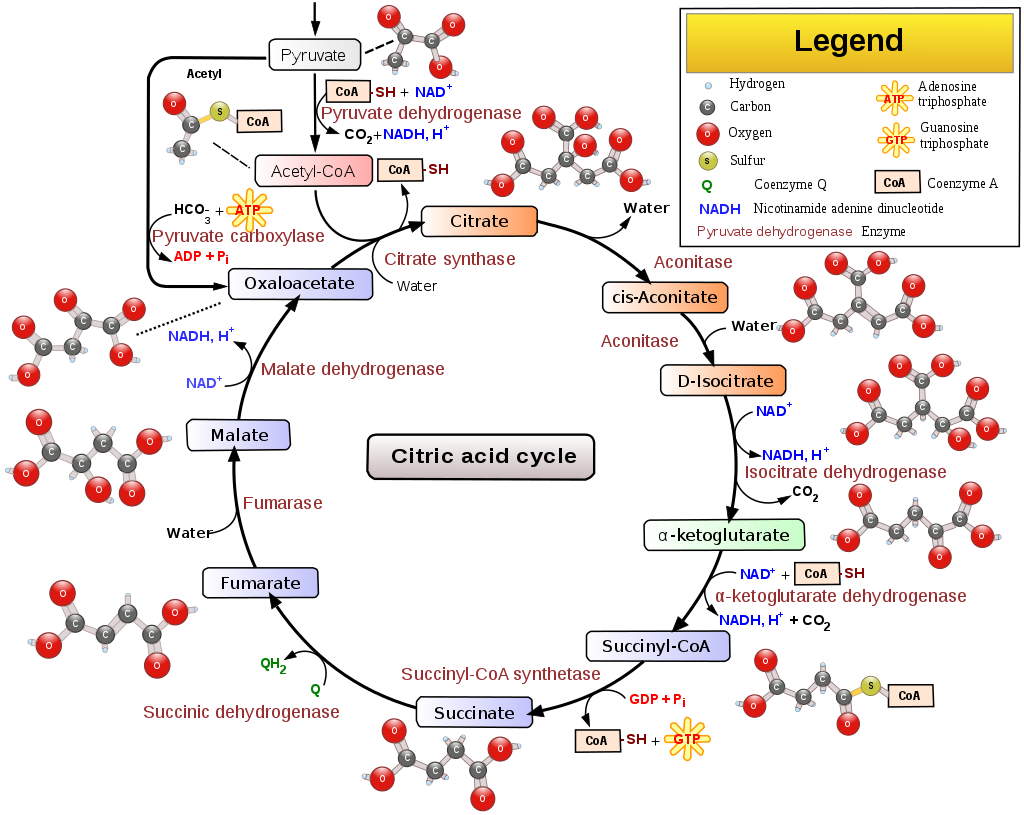Comment; This may be why vinegar supplements work so well in certain folks with fatigue, or supplements can be purchased for those who don’t like the taste.
Pyruvate dehydrogenase kinase (also pyruvate dehydrogenase complex kinase, PDC kinase, or PDK) is a kinase enzyme which acts to inactivate the enzyme pyruvate dehydrogenase by phosphorylating it using ATP.

PDK thus participates in the regulation of the pyruvate dehydrogenase complex of which pyruvate dehydrogenase is the first component. Both PDK and the pyruvate dehydrogenase complex are located in the mitochondrial matrix of eukaryotes. The complex acts to convert pyruvate (a product of glycolysis in the cytosol) to acetyl-coA, which is then oxidized in the mitochondria to produce energy, in the citric acid cycle. By downregulating the activity of this complex, PDK will decrease the oxidation of pyruvate in mitochondria and increase the conversion of pyruvate to lactate in the cytosol.
The opposite action of PDK, namely the dephosphorylation and activation of pyruvate dehydrogenase, is catalyzed by a phosphoprotein phosphatase called pyruvate dehydrogenase phosphatase.
Mol Genet Metab. 2004 Sep-Oct;83(1-2):138-49.
Author information
Barshop BA1, Naviaux RK, McGowan KA, Levine F, Nyhan WL, Loupis-Geller A, Haas RH.
Abstract
Clinical features are reported for 37 patients with various mitochondrial disorders, treated with sodium dichloroacetate (DCA) for 3 weeks to 7 years (mean 3.25 years) at 11-50 mg/kg/day (34.6+/-13.1) in an open-label format. DCA pharmacokinetics showed half-times approximately 86 min for the first intravenous dose of 50 mg/kg, 3.2 h for a subsequent intravenous dose 4-6 h later, and 11 h after continued oral dosing of 12.5-25 mg/kg twice daily. Basal blood and CSF lactate (mean values at entry 29.6 and 46.8 mg/dL, respectively) decreased at 3 months (to 18.1 and 34.2, respectively) and 12 months (to 17.7 and 33.1, respectively). There was some attenuation of the blood lactate response to oral fructose but not glucose, although the baseline lactate was lower with DCA. A standardized neurologic inventory showed stabilization or improvement over one year. The subjective impression of overall disease course was worsening in 21.6%, improvement in 48.6%, and no discernable effect in 29.7%. Among 8 patients who had 17 stroke-like events in 0.25-5 years prior to study entry, there were a total of 2 events over 3-6 years of treatment. In two cases institution of DCA resulted in dramatic relief of severe headaches which had been refractory to narcotics. Given variability of symptoms and limited understanding of natural history of mitochondrial disease, it is difficult to determine the efficacy of DCA in this open-label study, but there did appear to be some cases in which there were at least temporary benefits.PMID: 15464428 DOI: 10.1016/j.ymgme.2004.06.009[Indexed for MEDLINE]
- COVID UPDATE: What is the truth? - 2022-11-08
- Pathologist Speaks Out About COVID Jab Effects - 2022-07-04
- A Massive Spike in Disability is Most Likely Due to a Wave of Vaccine Injuries - 2022-06-30

